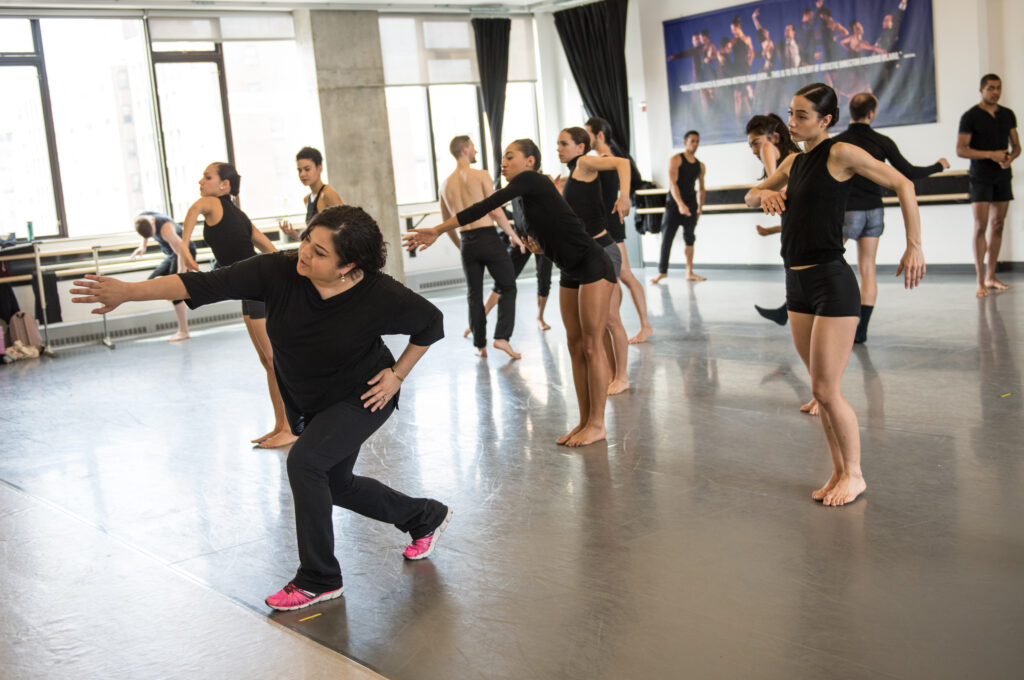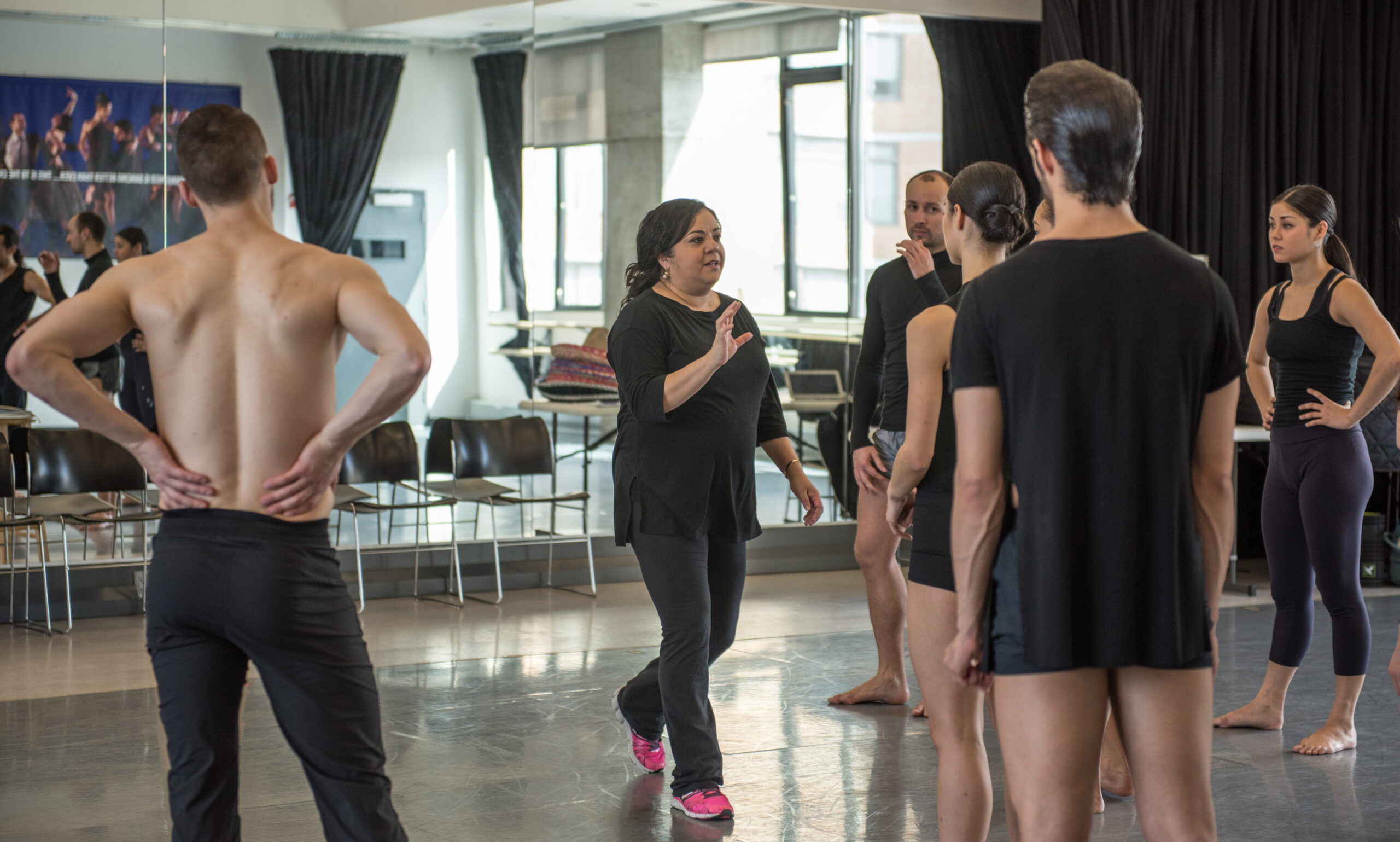At Ballet Hispánico, Michelle Manzanales Brings an Undertold Story to the Stage with Sor Juana
For over 50 years, Ballet Hispánico has elevated Latinx voices and artists through dance. The company returns to New York City Center June 1–3 with another program that carries that mission forward. The lineup includes not only the return of Pedro Ruiz’s signature work Club Havana and a duet from William Forsythe’s New Sleep, but also two world premieres: award-winning Puerto Rican choreographer Omar Román De Jesús’ Papagayos, and Ballet Hispánico School of Dance director Michelle Manzanales’ Sor Juana.
Manzanales, who formerly served as the company’s rehearsal director and artistic associate, is known for crafting thoughtful dances that shine light on underrepresented Latinx stories.
“My dance world and my identity, my culture, used to feel so separate,” says Manzanales. But at Ballet Hispánico, “those things have come together naturally.”
Sor Juana delves into the life of Mexican poet, scholar, philosopher, and nun Sor Juana Inés de la Cruz. Born in the Tepetlixpa municipality of Mexico in 1651, de la Cruz made waves as a leading visionary and feminist of her time, creating a lasting but undersung legacy.
We spoke with Manzanales about the premiere, why de la Cruz’s story continues to inspire, and advocating for underrepresented communities.

What drew you to Sor Juana’s story?
Not everybody knows about Sor Juana. But so many scholars, authors, and artists continue to be inspired by her and her work. She is in our ethos.
Some people call Sor Juana the first feminist of the Americas. What she lived through, I feel, is still parallel to what women deal with today in facing dampening expectations. Sor Juana taught herself how to read at three, and during the Baroque era it wasn’t even common for women to go to school. She studied mathematics, philosophy, you name it. She was an artist at heart and composed music, wrote poetry, and crafted operas. She was radical.
I think about feminism and the world now, and how there’s so much censorship of people’s identities and voices—questioning people and their choices when all they want is to live authentically. So her story really resonates with what’s going on in the world today: Can I have permission to live as myself?
How did you approach her story choreographically?
It’s overwhelming but exciting—I mean, there’s no way to tell the fullness of her story in a 30-minute piece. I have been working with a dramaturg and scholar, Kiri Avelar, who is a dear friend of mine that worked here in the school.
I wanted this to be more than just a biography of her life. I like playing with vignettes that aren’t necessarily in a straight line or in the same time period. Some are in a surreal place, and others are more literal. I’m also hoping to bring in the company dancers’ voices and the things they’ve struggled with considering their own identities, letting them tap into that to bring this story into our time.
What does the result look and sound like?
The choreography is a fusion of contemporary dance, ballet, and modern. And with jumping around in time, the costuming and music are very intentional for each section. I’m using a variety of music: some Baroque, some more modern, and some in between. There’s also a piece in it that Sor Juana composed, and recordings of Sor Juana’s poetry throughout.
Lots of people came to see Sor Juana; two queens fell in love with her. So that fascination is what I’m trying to capture onstage. And her decision to take up the veil—the transformation into the nun, which was a decision she made to protect her ability to express herself during that time—is another story I wanted to tell.
How does Sor Juana connect to Ballet Hispánico’s larger mission?
One of the most important things for me is providing another example of what a Latinx contemporary dance voice can look like. I feel that sometimes, audiences aren’t sure what to expect, or they come in with stereotypes in their head. The best thing is when the curtain goes down, and there’s chatter. Or better yet, when there’s silence, an exhale, and then chatter: “Let’s talk about that.”
I feel like that’s what the arts do, right? And it goes beyond dance. Art opens the portal into questioning what we may have thought, or what we thought we knew when we walked into that moment. I believe thatBallet Hispánico does that every day.




